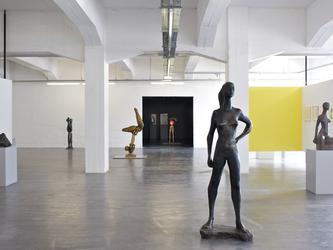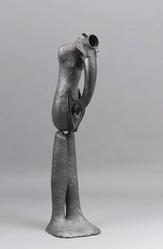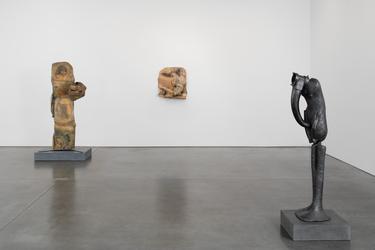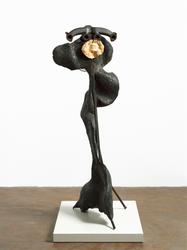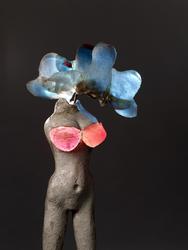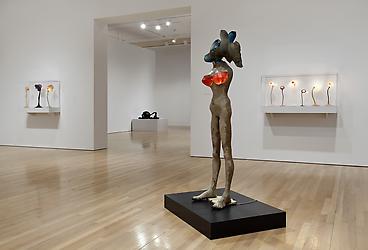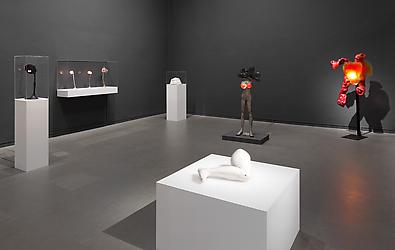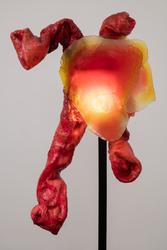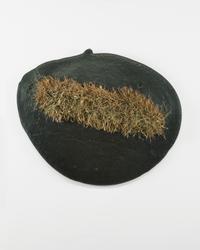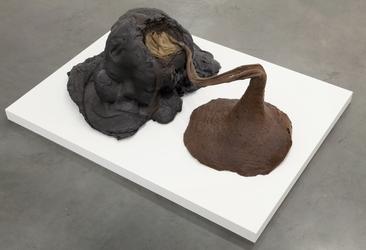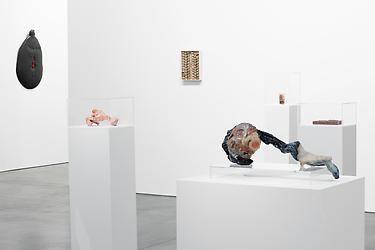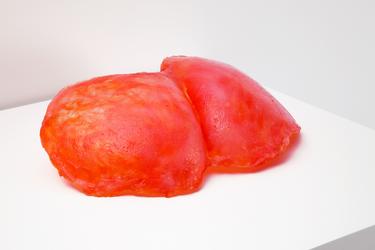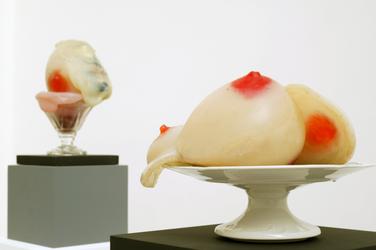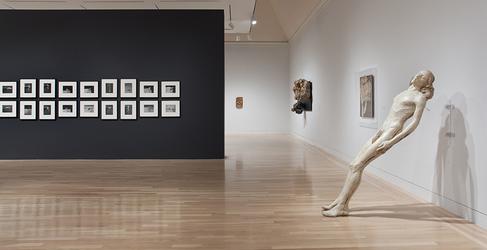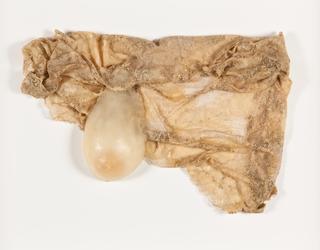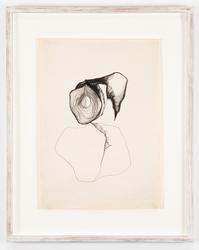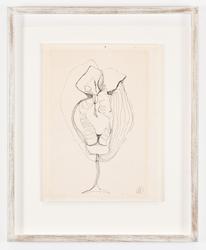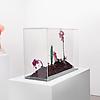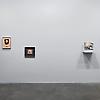Alina Szapocznikow
Alina Szapocznikow: Awkward Objects
Drawing on the work of prominent art historians, curators, critics, and collectors, this exhibition catalogue presents the most current research on the work of Alina Szapocznikow.
Born in Kalisz, Poland, in 1926, Szapocznikow studied in Prague and Paris, spent the last decade of her life in France, and created an impressive number of sculptures and drawings that are now defined as post-surrealist and proto-feminist. Recent exhibitions of the artist’s work in Germany and France, along with acquisitions by prominent collections worldwide, have bolstered Szapocznikow’s international reputation and ignited discussion of her significance to twentieth-century art.
ISBN: 9788392404460
Alina Szapocznikow: Body Traces
Jewish sculptor and proto-feminist Alina Szapocznikow (1926, Kalisz– 1973, Paris) was one of Poland’s outstanding post-WWII artists. Within two decades, she exchanged the language of classical sculpture with an idiosyncratic lexicon of new shapes, unusual materials, processes and themes that held a dialogue with the contemporary art scene and her own biography. Szapocznikow expanded the definition of sculpture in a deconstructive process of trial and error, while casting parts of her own body directly: an indexical imprint that testifies to the body’s deterioration.
This catalogue is published on the occassion of the exhibition Alina Szapocznikow: Body Traces at the Tel Aviv Museum of Art, February 7 - May 31, 2014.
Publisher: Tel Aviv Museum of Art, 2014
Paperback, 159 p., 100 ill., 70 colour, Hebrew/English
ISBN: 978-965-539-085
Lovely, Human, True, Heartfelt: The Letters of Alina Szapocznikow and Ryszard Stanislawski, 1948-1971
Alina Szapocznikow: Sculpture Undone, 1955-1972
A sculptor who began working during the postwar period in a classical figurative style, Alina Szapocznikow radically reconceptualized sculpture as an imprint not only of memory but of her own body. Though her career effectively spanned less than two decades (cut short by the artist’s premature death in 1973 at age 47), Szapocznikow left behind a legacy of provocative objects that evoke Surrealism, Nouveau Réalisme and Pop art. Her tinted polyester casts of body parts, often transformed into everyday objects like lamps or ashtrays; her poured polyurethane forms; and her elaborately constructed sculptures, which at times incorporated photographs, clothing or car parts, all remain as wonderfully idiosyncratic and culturally resonant today as when they were first made. Well-known in Poland, where her work has been highly influential since early in her career, Szapocznikow’s compelling oeuvre is ripe for art-historical reexamination. Alina Szapocznikow: Sculpture Undone, 1955–1972 offers a comprehensive overview of this important artist’s work at a moment when international interest is blossoming. Richly illustrated with over 150 color plates, the catalogue features essays that touch on key aspects of her practice and historical reception, as well as an extensive annotated chronology that provides an in-depth exploration of the intersection of her life and art. Working in one of the most rich and complex periods of the twentieth century, Szapocznikow responded to many of the ideological and artistic developments of her time through artwork that is at once fragmented and transformative, sensual and reflective, playfully realized and politically charged.
Alina Szapocznikow was born in Poland in 1926, and gained critical attention there for her early sculpture of the 1950s. She re-settled permanently in France in 1963, where her continued exploration of new materials such as polyester and polyurethane brought her into dialogue with the contemporary art scene of her time. She continued to push the boundaries of sculptural form and subject matter up until her premature death in 1973.
Paperback: 216 pages
Publisher: The Museum of Modern Art, New York; annotated edition edition (January 16, 2012)
ISBN-10: 0870708244
ISBN-13: 978-0870708244
Alina Szapocznikow: From Drawing into Sculpture
One of the first to use materials such as polyurethane foam and polyester resin, Alina Szapocznikow (1926–1973) is a renowned artist in her native country of Poland, and has been the subject of increased interest in the U.S, following her 2012 touring retrospective. Though she is better known for her sculptures, Szapocznikow’s drawings are equally unique and fascinating. Felt-tip, ballpoint, crayons, ink, watercolor and monotype were her materials of choice in the medium. Forty years after her death, they are now being rediscovered by scholars and museums worldwide. The works showcased in this book reveal the depth of Szapocznikow’s fantasy, the originality of her reflections on the body, as well as highlighting her humor, sexuality and exuberance. These drawings reflect the distinctive style of an artist who can be considered an heir to the Surrealists and a precursor to the Pop movement.
Hardcover: 184 pages
Publisher: Editions Dilecta (September 30, 2013)
ISBN-13: 979-1090490291
ASIN: B00AENY5JK
After-affects / After-images: Trauma and Aesthetic Transformation in the Virtual Feminist Museum
Do artists travel away from or towards trauma?
Is trauma encrypted or inscribed in art?
Or can aesthetic practices – after-images – bring about transformation – that does not imply cure or resolution – of the traces – after-affects – of trauma, personal trauma or historical traumas inhabiting the world whose traces artists also process as participants in and sensors for our life-worlds and histories? How does the viewer, coming belatedly or from elsewhere encounter works bearing such traces or seeking forms through which to touch and transform them?
These are some of the questions posed by major feminist art historian and cultural analyst, Griselda Pollock, in her latest installation of the virtual feminist museum. In closely-read case studies, we encounter artworks by Gian Lorenzo Bernini, Ana Mendieta, Louise Bourgeois, Alina Szapocznikow, Anna Maria Maiolino, Vera Frenkel, Sarah Kofman and Chantal Akerman to explore trauma and bereavement, fatal illness, first and second generation Holocaust experience, migration, exile and the encounter with political horror and atrocity. Offering a specifically feminist contribution to trauma studies, and a feminist psychoanalytical contribution to the study of contemporary art, this volume continues the conceptual innovations that have been the hall-mark of Pollock's dedicated exploration of 'feminist interventions in art's histories'.
Griselda Pollock is Professor of Social and Critical Histories of Art and Director of the Centre for Cultural Analysis, Theory and History at the University of Leeds.
Paperback: 384 pages
Publisher: Manchester University Press (October 22, 2013)
ISBN-10: 0719087988
ISBN-13: 978-0719087981
